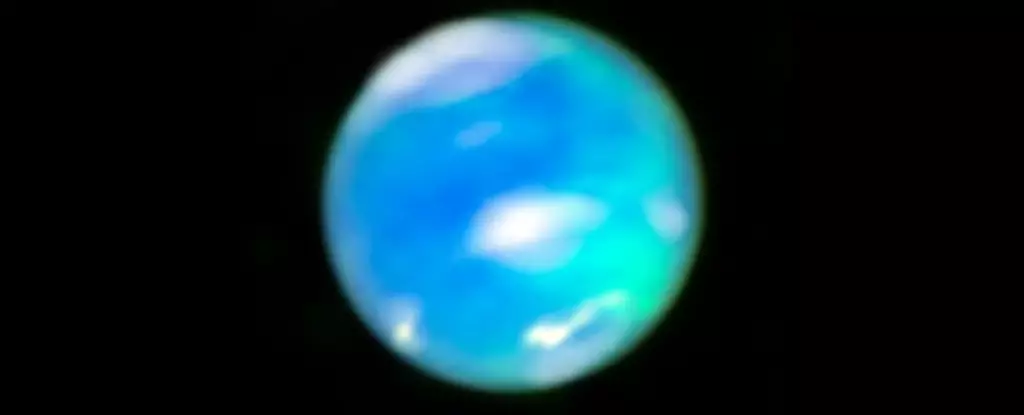The cosmos is replete with phenomena that both dazzle and confound the human imagination, and the recent revelation of auroras on Neptune stands as a testament to this truth. This sky-blue giant, situated in the remote outskirts of our Solar System, has always been an enigmatic presence. The discovery of auroras in this distant realm, captured through the innovation of the James Webb Space Telescope (JWST), unveils not just the scientific marvels inherent in the universe, but also provides tantalizing insights into the atmospheric interactions unique to each planet.
Historically, auroras have been seen as a hallmark of planets wielding magnetic fields. Earth’s stunning auroras paint the night sky with vivid colors, the direct result of particles from solar winds interacting with our magnetic field. The stark visual splendor of these atmospheric displays is one of the most breathtaking spectacles our planet has to offer. But to consider that Neptune now joins this exclusive club elevates our understanding of these spectacular phenomena in ways we never imagined.
The Role of Advanced Technology
Without the groundbreaking capabilities of JWST, our knowledge of planetary auroras would remain limited. This advanced telescope, equipped with a sensitive near-infrared spectrometer, has succeeded where others have faltered. Its observations have revealed the delicate glow of Neptune’s auroras, proving that even the farthest points of our Solar System are alive with interactions that merit our attention. Through the lens of JWST, scientists were able to identify the presence of trihydrogen cation (H3+), a component directly associated with the auroral activity on Neptune.
Understanding and mapping these auroras has been a complex puzzle, especially when considering the peculiarities of Neptune’s magnetic field. Unlike Earth, where auroras traditionally occur at the poles due to the convergence of magnetic field lines, Neptune’s more chaotic magnetic geometry directs the particulate bombardment towards its equator. Such dissimilarities illustrate that while some mechanisms unite planets in auroral activity, each world expresses this phenomena distinctly, showcasing the diversity that exists amidst our celestial neighbors.
The Distant Relatives: A Comparative Perspective
The auroras on Neptune prompt a rich comparison with other planets in our Solar System. Jupiter, for example, boasts auroras that are much more intense and energetic, acting as a luminous crown for its massive presence. With its moons exhibiting their own variations of this beauty, Jupiter becomes a realm of grandeur where auroras take on a life of their own. Mars and Venus contribute their colors to this cosmic palette as well, with each planet adding its own unique hue to the auroral tapestry of the Solar System.
Very interestingly, Mercury’s aurora diverges from this norm, manifesting as X-ray fluorescence caused by solar particle interactions with surface minerals rather than atmospheric reactions. This deviation underscores the myriad ways that solar interactions shape the signatures of auroras across different planets, prompting scientists to consider how fictively anthropocentric our understanding of space and conditions can often be.
A New Era of Exploration
With the recent discovery of auroras on Neptune, it is imperative to reconsider not just our Solar System but the vast realms that exist beyond our sight. If Neptune harbors such beauty hidden within its depths, what could possible exist on exoplanets orbiting far-flung stars? This discovery heralds a new era of exploration into distant worlds, urging astrophysicists to refine their approaches in studying the attributes of planetary auroras across the universe.
Neptune’s auroras remind us that the cosmos is not merely a collection of lifeless bodies floating in space; rather, they are pulsating entities that hold secrets and wonders yet to be unveiled. As observational technology continues to advance, the prospects of learning from our extraterrestrial neighbors become ever richer, inviting speculation about further hidden beauties waiting to be discovered in the dark expanses of space.
Neptune’s recently revealed auroras stand as a profound reminder of the interconnectedness of all celestial bodies, crafting a narrative that encourages an appreciation not only of the visual spectacles they present but of the physics and phenomena that underpin these displays. Thus, a journey into the unknown is less about traversing empty space, and more about illuminating the boundless creativity of the universe itself.


Leave a Reply